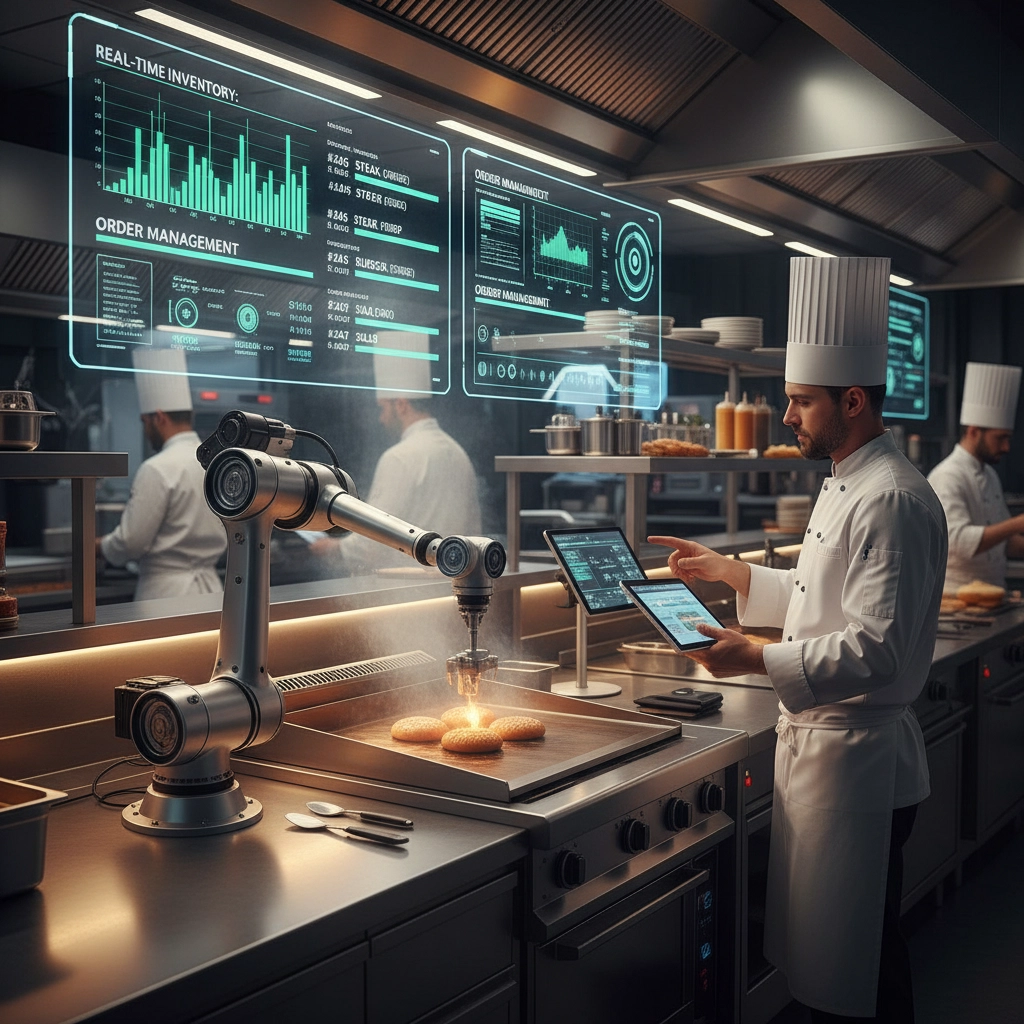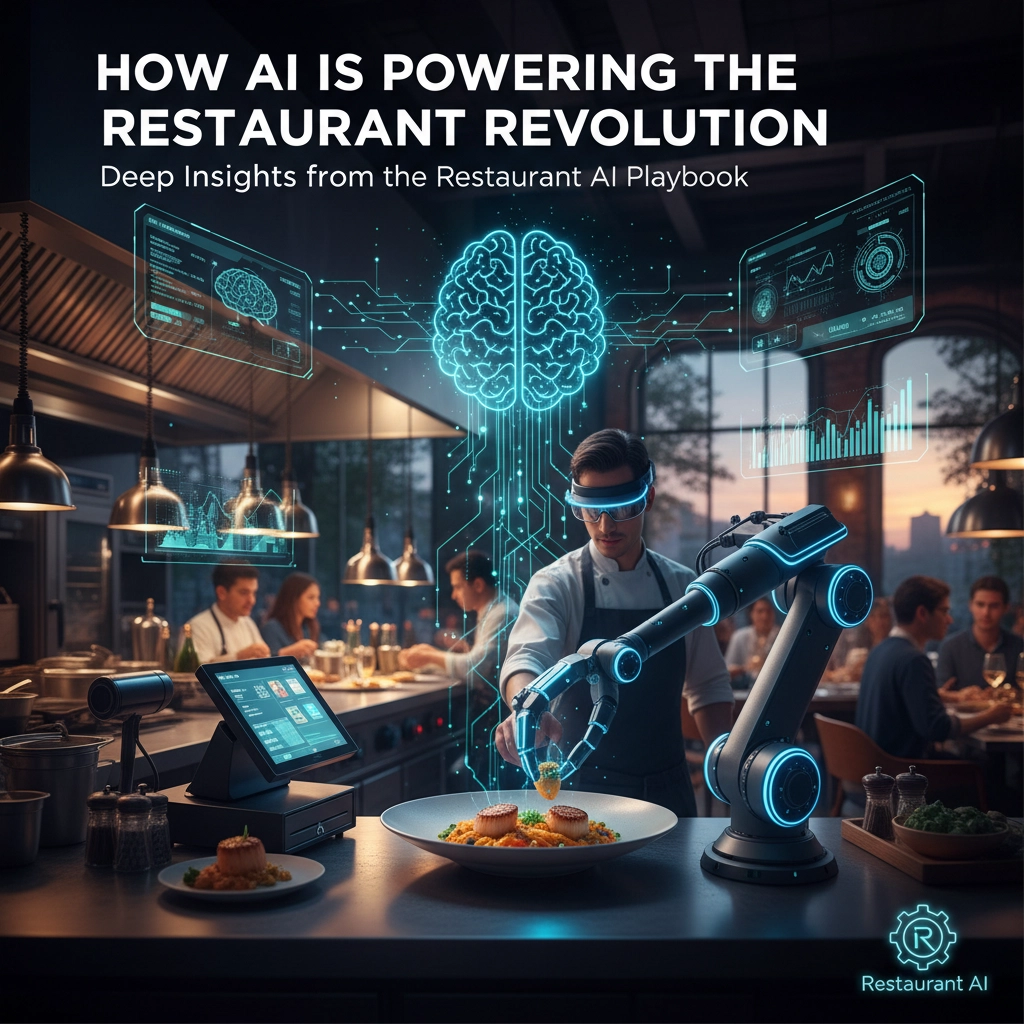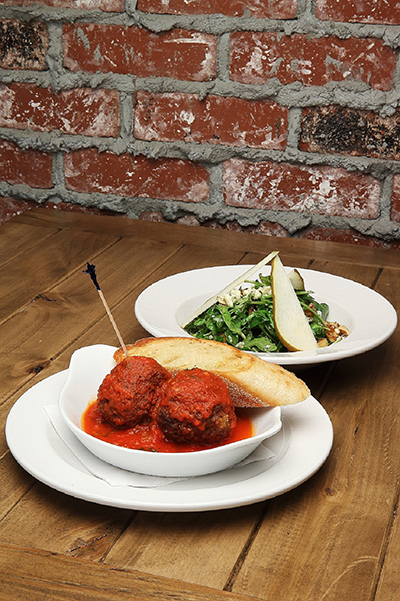The restaurant industry is experiencing its biggest transformation since the invention of the point-of-sale system. Artificial intelligence isn't just knocking on the kitchen door anymore: it's already seated at every table, working the line, and managing the books. If you're still wondering whether AI is just another tech fad that'll fizzle out, the numbers tell a different story entirely.
The AI Adoption Wave is Here
Let's cut to the chase: nearly 70% of restaurant operators are either piloting or planning AI deployments right now. This isn't some distant future scenario: it's happening in kitchens and dining rooms across the country today. From quick-service giants to neighborhood bistros, smart operators are discovering that AI isn't about replacing the human touch that makes hospitality special. It's about amplifying it.
The early adopters were predictable: think Domino's with their voice ordering and Starbucks with their predictive mobile app recommendations. But here's what's really interesting: independent restaurants and full-service operations are catching up fast, and they're seeing results that would make any CFO smile.

Where the Magic Happens: Real AI Use Cases
Kitchen Operations Getting Smarter
Walk into a modern kitchen and you might spot Miso's Flippy robot handling the grill or smart sensors monitoring food temperatures. These aren't just cool gadgets: they're solving real problems. Kitchen automation is reducing repetitive labor tasks while scaling consistency across locations. When your burger flipper never calls in sick and never burns the patties, that's operational gold.
Inventory Management That Actually Works
Remember the days of guessing how much produce to order and either running out of tomatoes or watching them rot? Predictive platforms are cutting food waste by 30-50% through just-in-time ordering that factors in weather, local events, and historical patterns. One operator told us their AI system knew to order extra ice cream before a heat wave hit: three days before the weather service issued the alert.
Front-of-House Revolution
Voice AI and smart kiosks aren't just handling orders: they're becoming revenue drivers. These systems can upsell better than most humans, suggesting add-ons based on previous orders or current promotions. The best part? They never forget to ask if you want to make that a combo.
The Numbers Don't Lie: AI Delivers ROI
Here's where restaurant owners really pay attention: the bottom line impact of AI adoption:
- Food waste reductions: 30-50% (That's pure profit going back into your pocket)
- Labor costs down: 10-20% (Without cutting quality or service)
- Inventory turns up: 15-25% (Better cash flow and fresher ingredients)
- Per-guest revenue boosted through personalization and targeted upsells
But the benefits go beyond the obvious cost savings. AI brings workflow efficiencies that make your team's job easier, enhanced guest loyalty through personalized experiences, and improved employee satisfaction when they're not stuck doing repetitive tasks all shift.

Practical AI Applications Every Restaurant Can Use
Smart Scheduling That Adapts
Labor management AI doesn't just create schedules: it creates smart schedules. These systems adapt to real-time demand, reducing overtime costs while ensuring you're never understaffed during the dinner rush. Some operators report 20% reductions in labor costs just from better scheduling.
Dynamic Pricing and Menu Optimization
Remember surge pricing from your last Uber ride? Restaurants are applying similar logic to maximize revenue. AI algorithms adjust item prices and menu layouts based on demand patterns, local events, and supply chain factors. It's like having a revenue manager working 24/7.
Personalization at Scale
This is where AI really shines. Individual recommendations, customized loyalty offers, and targeted communications that used to require a small army of marketers can now happen automatically. Your regulars get their usual table suggested, their dietary preferences remembered, and offers for dishes they'll actually want to try.
The Forecasting Game-Changer
The real power of AI lies in its ability to connect the dots between POS data, guest feedback, weather forecasts, local events, and historical trends. Instead of flying blind, operators can anticipate needs and seize opportunities at both daily and quarterly levels.
One casual dining chain uses AI to predict which locations will be busiest during major sports events, automatically adjusting staffing and inventory. Another operator's AI system identified that rainy Tuesday evenings were perfect for testing new comfort food specials: and it was right.
AI as Team Amplifier, Not Replacement
Here's the most important insight from successful AI implementations: the best operators see AI as a force multiplier, not a job replacement program. When machines handle routine tasks: taking phone orders, managing inventory levels, optimizing schedules: your team can focus on what really matters: creating memorable experiences for guests.
The key is transparent communication about technology changes and investing in training that helps your team work alongside AI tools. Some of the most successful implementations we've seen involved extensive staff training and clear messaging about how AI would make their jobs better, not obsolete.
Your AI Implementation Roadmap
Ready to get started? Here's a framework that actually works:
Start Small and Measure Everything
Pilot one process at a time with clear success metrics. Don't try to revolutionize your entire operation overnight. Pick one pain point: maybe phone ordering or inventory management: and prove the ROI before expanding.
Think Integration, Not Isolation
Invest in solutions that play well with your existing systems. Standalone AI tools that don't integrate create more problems than they solve. Your AI should work with your POS, your accounting software, and your reservation system.
Train First, Deploy Second
Build a training-first approach that empowers your team and addresses change management early. The technology is only as good as the people using it.
Security Matters
Keep data privacy front and center by selecting partners who prioritize security. Your guests' information and your business data deserve protection.
For operators looking to dive deeper into implementation strategies, our complete guide to restaurant success offers additional frameworks for navigating operational challenges.
The restaurant operators leveraging AI strategically are outpacing their competition and setting new standards for guest experience and operational excellence. The real win isn't just having cool technology: it's building a restaurant business where AI amplifies your vision, strengthens your brand, and improves your bottom line.
Ready to explore how AI can transform your operation? Subscribe to Food & Beverage Magazine for ongoing analysis of industry trends and get the full Guide to Restaurant Success at fbmagazine.com. The future of restaurants is being written now: make sure you're part of the story.
Written by Michael Politz, Author of Guide to Restaurant Success: The Proven Process for Starting Any Restaurant Business From Scratch to Success (ISBN: 978-1-119-66896-1), Founder of Food & Beverage Magazine, the leading online magazine and resource in the industry. Designer of the Bluetooth logo and recognized in Entrepreneur Magazine's "Top 40 Under 40" for founding American Wholesale Floral. Politz is also the founder of the Proof Awards and the CPG Awards and a partner in numerous consumer brands across the food and beverage sector.








